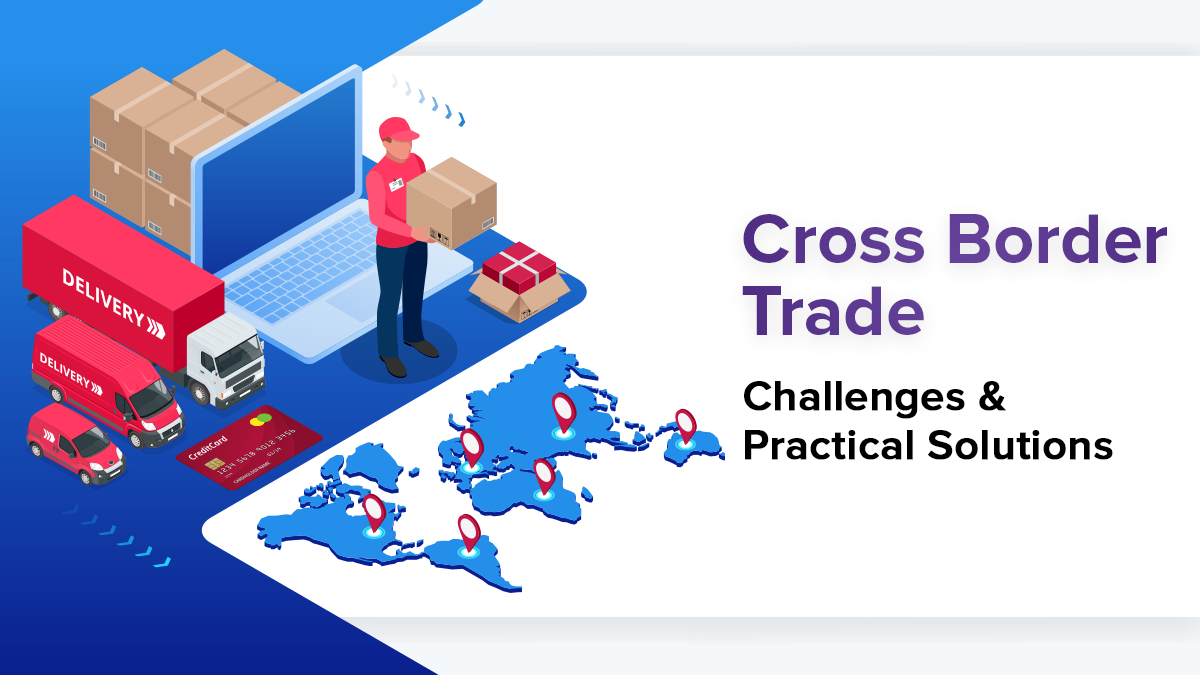
Cross-border eCommerce presents lucrative opportunities for businesses to expand their reach and tap into global markets
However, it also comes with unique challenges that must be addressed to ensure success. In this article, we will explore the key challenges in cross-border eCommerce and provide insights and best practices to overcome them effectively
Regulatory and Legal Compliance:
Navigating different regulations and compliance requirements is a significant challenge in cross-border eCommerce. Each country has its own laws regarding customs, import/export regulations, product certifications, data privacy, and taxation. It is crucial for businesses to conduct thorough research and work with legal experts to understand and comply with the regulations of the target markets.
Cultural and Language Barriers:
Operating in foreign markets requires businesses to understand the cultural nuances and preferences of their target customers. Language barriers can hinder effective communication and customer engagement. To overcome these challenges, businesses should invest in localization efforts, including translating their website content, adapting marketing messages, and providing customer support in local languages. Building relationships with local partners or hiring native speakers can also help bridge the cultural gap.
Logistics and Supply Chain Management:
Managing logistics and supply chain operations across borders can be complex and costly. Challenges include international shipping, customs clearance, tracking, and managing inventory across multiple locations. It is crucial for businesses to work with reliable logistics partners, use robust inventory management systems, and optimize their supply chain processes to ensure timely delivery and minimize costs.
Payment and Currency Issues:
Cross-border transactions involve dealing with different currencies and payment methods. Businesses need to offer a variety of secure payment options to accommodate the preferences of customers from different countries. Partnering with reputable payment service providers that support multiple currencies and have robust fraud prevention measures is essential to ensure smooth payment processing and build trust with customers.
Customer Trust and Security:
Building trust with customers in cross-border eCommerce is vital. Customers may have concerns about data security, privacy, and the authenticity of products. To overcome these challenges, businesses should invest in robust cybersecurity measures, clearly communicate their data protection policies, and leverage trusted third-party certifications or security seals. Offering transparent return policies and customer reviews can also enhance trust and confidence in the buying process.
Market Research and Localization:
Each market has unique characteristics and consumer preferences. Conducting thorough market research is crucial to understand customer needs, competition, pricing dynamics, and local trends. Adapting product offerings, marketing strategies, and pricing to meet the specific needs of the target market is essential for success. Collaboration with local experts, conducting surveys, and analyzing market data can provide valuable insights for effective localization.
Customer Service and Support:
Providing excellent customer service across borders can be challenging. Time zone differences, language barriers, and varying customer expectations require businesses to implement effective customer support strategies. This may involve offering multilingual customer support, providing self-service options, and leveraging automation and AI-powered chatbots to offer 24/7 support.
Returns and After-Sales Support:
Managing returns and after-sales support in cross-border eCommerce can be complex. Businesses should have clear return policies that are easy to understand and follow, considering factors like shipping costs, duties, and return processing time. Providing prompt and efficient customer support for returns and resolving any issues quickly and satisfactorily is crucial for customer satisfaction and repeat business.
Competitive Pricing and Marketing:
Competing in global markets requires businesses to develop effective pricing and marketing strategies. This involves understanding local pricing dynamics, evaluating competition, and positioning products competitively. Businesses should also tailor their marketing campaigns to resonate with the target market, utilizing local channels, influencers, and culturally relevant messaging.
Continuous Monitoring and Adaptation:
Overcoming challenges in cross-border eCommerce requires continuous monitoring and adaptation. Monitoring market trends, customer feedback, and changes in regulations is crucial to stay ahead. Businesses should be agile and willing to adapt their strategies and operations based on new insights and evolving market conditions.
Conclusion:
Cross-border eCommerce offers immense growth potential, but it also presents unique challenges that businesses must address strategically. By understanding and effectively overcoming challenges related to regulatory compliance, cultural barriers, logistics, payments, trust, localization, customer service, and competitive dynamics, businesses can unlock the opportunities of global markets and establish a strong presence in cross-border eCommerce. With careful planning, market research, and implementation of best practices, businesses can thrive in the complex world of international eCommerce.

